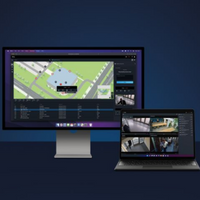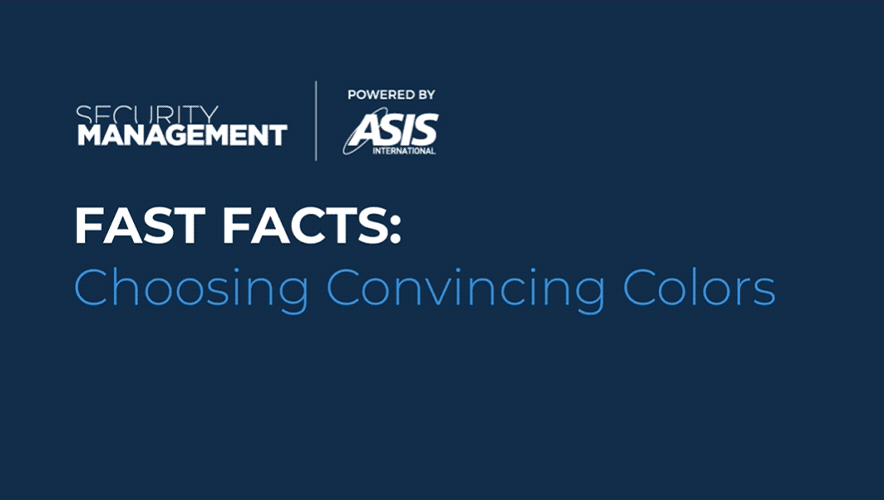Why Unifying Security Systems Helps Make Your Case to the C-Suite
For years, security technology was regarded as a sunk cost, an operational necessity mostly focused on protecting people and assets. That’s changing as today’s executives become more aware of the value unlocked by data-driven insights provided by modern, unified security systems.
These systems offer the potential for higher returns on investment and help C-suite executives recognize security as much more than a risk mitigation function. The right security system goes beyond security to be a strategic, enterprise-shaping technology.
Return on investment (ROI) is often a question of goals. Where does the leadership team want to take the organization in the next five, 10, or 15 years? What is the strategy to achieve this? What data, features, or insights would be most meaningful to support these goals? A unified software platform enables better tracking of key metrics and more collaboration between departments. This in turn enables better decisions and potentially a greater ROI.
What pain points could be resolved with better collaboration, automation, visibility, or operational changes? If multiple departments are running similar systems in parallel, what could your organization gain if you eliminate redundant systems and processes? Could you reallocate those resources?
By thinking through the use cases for a security system—particularly a unified one—security leaders can prepare their case for a large-scale investment that will meet the organization’s specific needs.
Advantages Beyond Security
Companies that invest in a unified, open architecture system have the potential to create cutting-edge competitive advantages that can help them stand out from the pack. Not only are they better protected from cybersecurity threats and other risks, but they can also apply innovative technologies in novel ways. This includes streamlining operations, improving the customer experience, or even delivering more specific and relevant marketing messages.
For example, data from video analytics and sensors can be used to better understand how people move throughout your venue. You can learn how many people are present at any given time and how this fluctuates on an hourly or daily basis. When paired with automatic license plate recognition (ALPR) data, this information gives you an idea of the state or province in which your customers reside.
Security teams can use this data to watch for anomalies that might indicate a threat or concern. Other departments can take the same data and use it in a different way. Operations could use it to identify bottlenecks or traffic congestion. They can reassign staff resources, open more queue lines, or employ staff to guide customers and proactively avoid the congestion. Marketing could use the data to tailor campaign messaging or determine whether advertising in adjacent regions is driving more people to visit.
With a modern unified platform, each department or person can create their own dashboard to track the metrics that matter most to them. This makes it quicker and easier to spot trends, threats, and opportunities.
SponsoredWhat is the power of unification?Unifying video management and access control, along with other functions, reduces costs and improves efficiency. If your organization is thinking of moving towards unified security, you’re not alone. With Genetec Security Center 5.11, we make unification even easier. |
The Power to Think Differently
C-suite decision-makers need good data to support novel solutions. When your data is divided by siloed systems, it’s hard to connect the dots and see the full scope of the opportunity. A unified platform allows you to combine and track data so that you can see trends and understand how one event is linked to another.
One example is office space. Instead of going into the office every day, many people now work from home or divide their time between home and office. Employees who have this option appreciate the flexibility, but it poses a dilemma for companies. It can make it challenging to know how much office space is needed. Organizations don’t want to pay for space that isn’t used. However, they want to make sure that employees have a comfortable spot to work or meet when at the office. Facility managers can leverage data from access control and video analytics to get a detailed picture of how office space is used without compromising privacy.
For example, through a unified access control system, facility managers can find out how often employees in different departments come into the office. This leads to more informed decisions on whether to set up individual desks or hot desks and helps determine how much space is required. Are meeting rooms used? Are they frequently overcrowded or underutilized? Facilities teams use that information to decide whether to divide or combine spaces.
Security system data can also have preventative benefits. For instance, data from an access control system can alert facility operators when a door has been opened a certain number of times and the hardware is due for maintenance.
Data on use-of-space can even be used to optimize and reduce utility costs when physical security systems are connected to HVAC and electrical systems. That way a company isn’t paying for climate control and lights in empty rooms.
Security analytics can be leveraged for operational benefits in all industries, and the best use case to demonstrate their value depends on the organization’s priorities. Restaurants, retail stores, and stadiums have successfully used video analytics to flag management when a queue line was too long. They can send staff to open new checkout lanes, reducing cart abandonment. One casino company even used ALPR data to alert customer service staff when VIP guests arrived so they would be ready to greet them by name at the door and usher them to their favorite table. There are multiple ways security system data may be used to improve the guest experience and lead to more revenue from satisfied customers.
Supply Chain Resiliency
In addition to the ways a unified security system can provide data to support business decisions, it can also help your team navigate challenges.
A top concern for many C-level executives this past year was the supply chain. The COVID-19 pandemic illuminated the fragility of today’s global supply chains. Shipping delays and supply shortages have plagued every industry and affected every business, from mom-and-pop shops to multimillion-dollar international corporations.
An open architecture software platform can help insulate organizations from some of these impacts because end users are not limited to a single source supplier. If they need to replace or add components to a system and one supplier is out or limited in stock, they have the option to explore other supported manufacturers for alternatives.
Cybersecurity
C-level teams continue to place a high value on protecting their organizations from cybersecurity attacks. The average cost of a data breach in 2022 was $4.35 million, according to IBM. A cyberattack can result in a loss of productivity, significant recovery costs, and a decrease in customer trust. Therefore, businesses must remain agile and responsive to evolving threats to protect their assets, customers, and overall brand.
With the proliferation of Internet of Things (IoT) devices, it’s essential to look at both cyber and physical security together. A third aspect is the protection of private and personally identifiable information (PII). This is a growing concern due to the quality and quantity of data collected by security systems every day.
Like strands in a rope, cybersecurity, physical security, and privacy protection are stronger when woven together. Cybersecurity and privacy protection need to be built in at every level of a modern physical security solution.
A layered defense is most effective.
Look for vendors that place a top priority on cybersecurity. In addition to basic cybersecurity measures such as data encryption, authentication, and authorization measures, your security system provider should also monitor for threats and vulnerabilities. Do they have a comprehensive strategy in place to close security gaps if needed? Does the vendor engage third-party auditors and conduct penetration tests to identify and address security gaps?
Threat monitoring and software updates are only part of the solution, however. Everyone in the organization needs to have a good understanding of cyber hygiene basics. This applies to vendors and suppliers as well as internal stakeholders. Simple steps like protecting and frequently changing passwords are important. Training on recognizing and avoiding suspicious emails—as well as using features like two-step authentication—go a long way to reducing cybersecurity risks.
Privacy protection adds another layer of defense. Automatically blurring or hiding personally identifiable information in video files and other data makes it less likely for it to be lost, stolen, or shared. Access to the original files can be restricted to users with specific credentials. A unified platform makes this more manageable.
Return to ROI
When all systems bring data into a single platform, companies can realize important cost savings. Operational expenses go down, the cost of maintenance is reduced, training is simplified, and employees can get their work done more effectively and efficiently.
Data can provide actionable insights that lead to greater efficiency and improved guest experiences. It’s also important to consider ROI through the lens of the total cost of ownership. A seemingly cheaper option can cost more in the long run, when you tally it all up.
As the value of the data-driven insights provided by unified physical security systems is realized, security departments are moving away from being seen as a cost center. They are becoming active and central players in their organizations’ digital transformation of operations and strategic planning.
Kyle Hurt is the area vice president of sales, United States and Canada, for Genetec. In this role, he is responsible for executing sales plans to successfully achieve business objectives in the region. Hurt directs an organization of more than 80 people including sales representatives and engineers. Hurt joined Genetec in 2008 as a regional sales manager the south-central region. In 2014, Hurt became the regional sales director – central before being promoted to the senior director of sales in the United States in 2018. He was promoted to his current role in 2023.

















